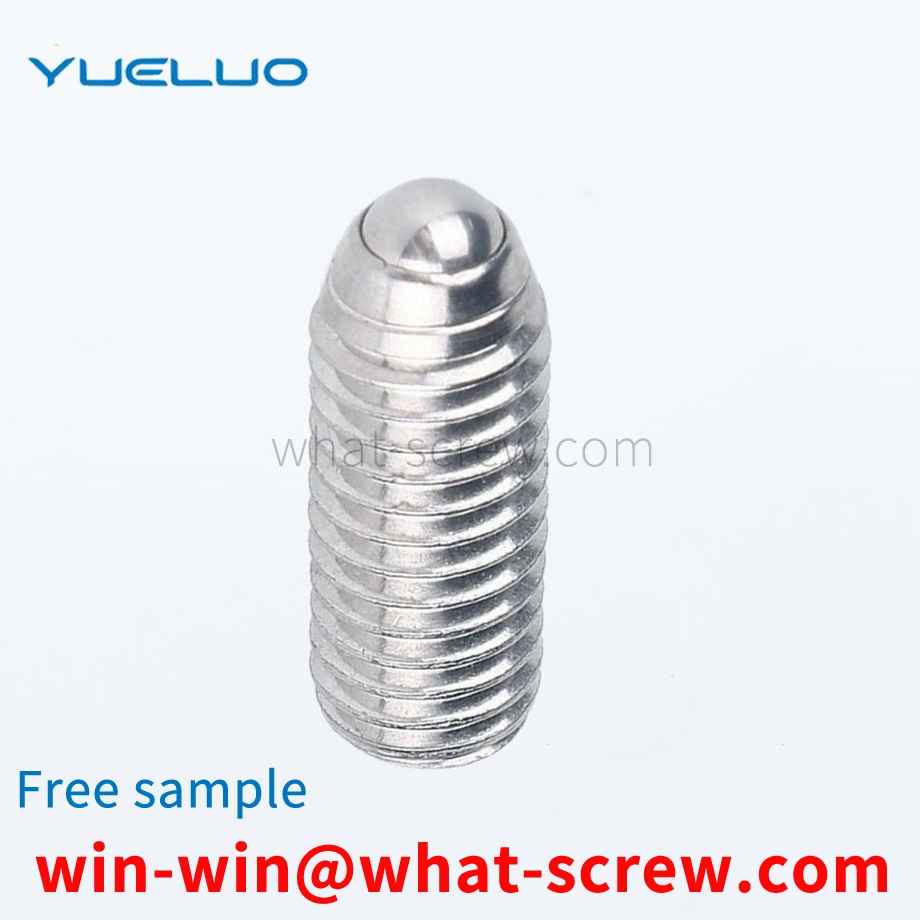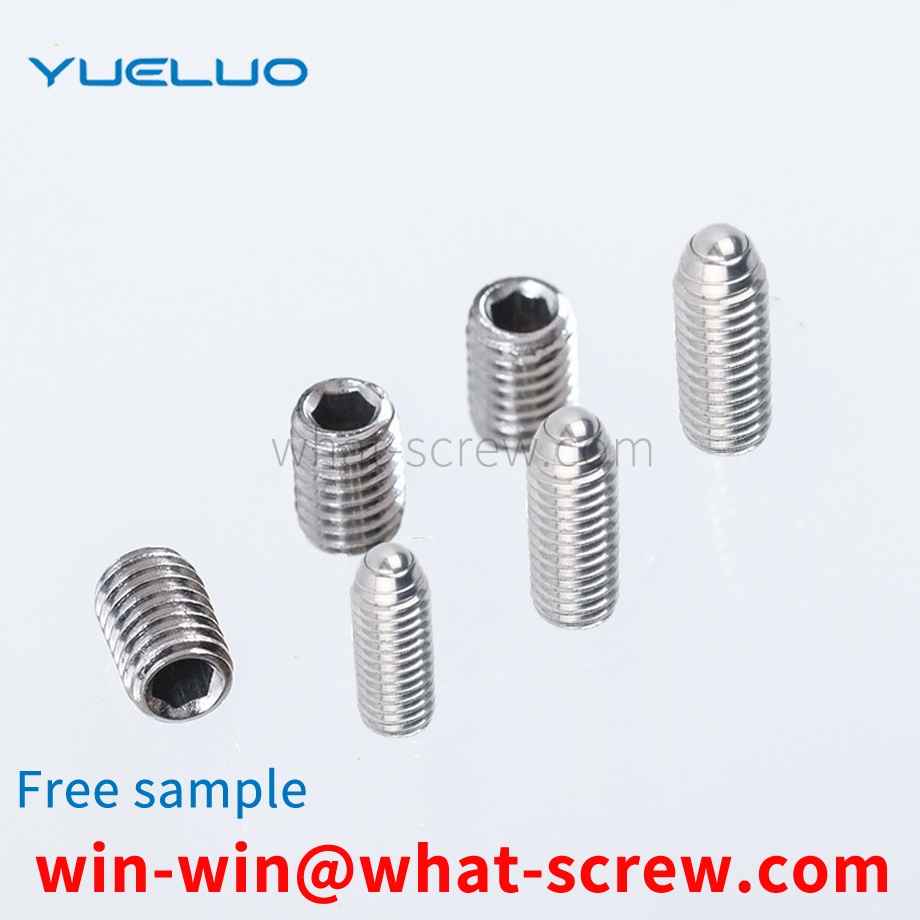In another embodiment of Guangdong Yueluo Hardware Industrial Co., Ltd., the conveying device 3 includes a motor 31 and a circular rotating disk 34, the motor 31 drives the circular rotating disk 34 to rotate, and the circular rotating disk 34 is evenly provided with screws in the circumferential direction. The matching screw accommodating hole 35, the screw enters the screw accommodating hole 35, the motor 31 drives the circular rotating plate 34 to rotate, so that the screw is first slotted by the cutting wheel 42, and then polished by the fixing wheel 48, and the screw is in the screw accommodating hole 35. It is fixed, which is more secure and reliable during the slotting process. Preferably, the circular rotating disk 34 includes a circular rotating disk 32 and a sector-shaped fixed disk 33. The circular rotating disk 32 is evenly provided with screw receiving recesses matching the screws in the circumferential direction, and the recesses and the sector-shaped fixed disk 33 are formed with the screws The matching screw receiving holes face the cutting wheel 42 and the fixing wheel 51 .
Generally speaking, the metal plate needs to open holes for inserting the rivets, and then press the two sides of the metal plate along the positive direction of the metal plate with a jig, so that the metal plate is deformed in the plane direction, which makes the inner edge of the hole Shrink and fit the rivet. Existing riveting techniques are not suitable for thin sheets. Because the thin plate does not have enough thickness to compress in its forward direction, the insufficient deformation in the forward direction causes enough deformation in the plane direction to insert the rivet, so the rivet cannot be firmly fixed to the thin plate.
Screws are a common type of fastener on the market. It is a type of fastener consisting of a head and a screw. It can be divided into three categories according to its purpose: machine screws, set screws and special purpose screws. Machine screws are mainly used for a fastened connection between a part with a fixed threaded hole and a part with a through hole, without the need for nut matching (this connection form is called screw connection, which is also a detachable connection; it can also be Matching with nuts, it is used for fast connection between two parts with through holes.) Set screws are mainly used to fix the relative position between two parts. Special purpose screws, such as eyebolts, are used for hoisting parts.
The drawing process has two purposes, one is to modify the size of the raw materials; the other is to obtain basic mechanical properties of the fasteners through deformation and strengthening. For medium carbon steel, medium carbon alloy steel also has another purpose, that is, to make the wire rod. The flaky cementite obtained after controlled cooling is cracked as much as possible during the drawing process to prepare for the subsequent spheroidization (softening) annealing to obtain granular cementite. However, some manufacturers arbitrarily reduce the drawing in order to reduce costs. The excessive reduction rate increases the work hardening tendency of the wire rod, which directly affects the cold heading performance of the wire rod. If the distribution of the reduction ratio of each pass is not appropriate, it will also cause torsional cracks in the wire rod during the drawing process. In addition, if the lubrication is not good during the drawing process, it can also cause regular transverse cracks in the cold drawn wire rod. The tangential direction of the wire rod and the wire drawing die is not concentric at the same time when the wire rod is rolled out of the die, which will cause the wear of the unilateral hole pattern of the wire drawing die to aggravate, make the inner hole out of round, and cause uneven drawing deformation in the circumferential direction of the wire. The roundness of the steel wire is out of tolerance, and the cross-sectional stress of the steel wire is not uniform during the cold heading process, which affects the cold heading pass rate. During the drawing process of the wire rod, the excessive surface reduction ratio will deteriorate the surface quality of the steel wire, while the too low surface reduction ratio is not conducive to the crushing of the flaky cementite, and it is difficult to obtain as much granular cementite as possible. , that is, the spheroidization rate of cementite is low, which is extremely unfavorable to the cold heading performance of the steel wire. For the bar and wire rod produced by the drawing method, the partial surface reduction rate is directly controlled within the range of 10%-15%.
Head type broadcast 1. Hexagon head (hexagon head) 2. Hexagon head with flange (hexagon head with flange) 3. Square head (square head) 4. T head T head (hammer head) 5. Mushroom head (truss head) 6. Cheese head 7. Round head 8. Pan head 9. Countersunk head (flat head) 10. Raised countersunk head (oval
We have many years of experience in the production and sales of screws, nuts, flat washers, etc. The main products are: double-way hexagon copper column nuts, filament full-tooth external hexagon screws, iron clip screw caps, carbon steel nickel-plated one-piece caps and other products, we can Provide you with the right fastener solution for you.



















 Service Hotline
Service Hotline




